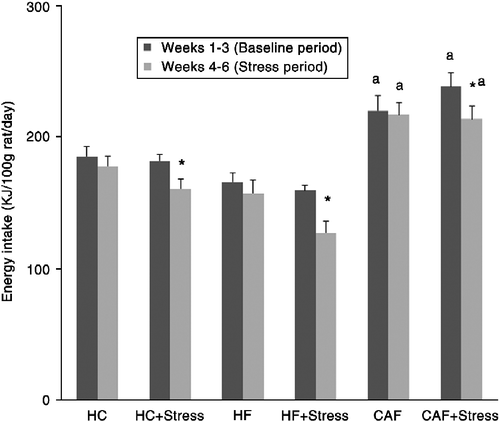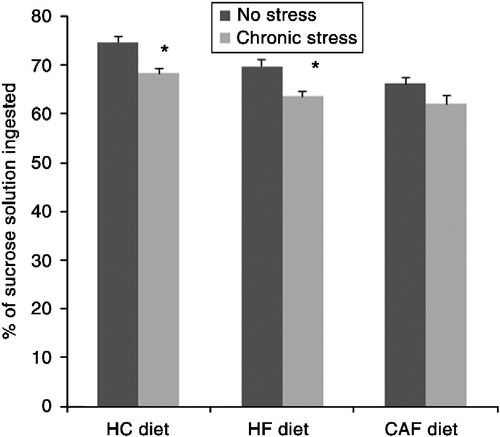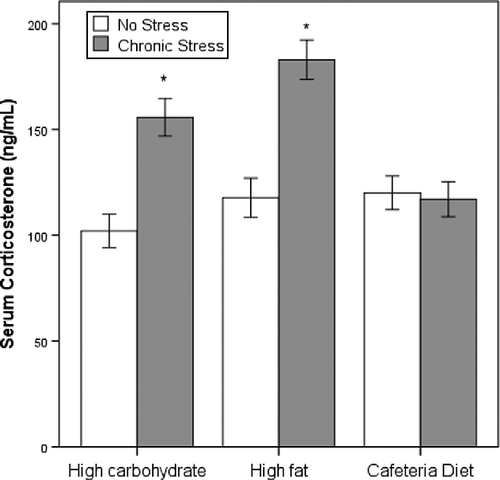Figures & data
Table I. Nutrient composition of the HC and HF diets and of cafeteria diet food items.
Table II. Schedule of stressor agents used during the chronic stress treatment.
Figure 1. Energy intake (kJ/rat/day) of rats fed a high-carbohydrate, high-fat, or cafeteria diet and either submitted to a CVS paradigm or not during weeks 3–6. Data are expressed as the mean ± SEM. *Statistical difference with regard to the first 3 weeks. aStatistical difference with regard to the high-carbohydrate dietary group in the same stress condition. p < 0.05 is considered significant. Note: there was no significant difference between the energy intake of stressed and non-stressed animals.

Table III. Energy intake (kJ/rat/day) from different cafeteria items of rats fed a cafeteria diet and either submitted to a CVS paradigm or not during weeks 4–6.
Figure 2. Percentage of sucrose solution from the total liquid ingested during 2 h in rats fed a high-carbohydrate, high-fat, or cafeteria diet and either submitted to a CVS paradigm or not (n = 8). Data represent the average of three sucrose preference tests conducted during weeks 4–6 of the experiment. Results are expressed as mean ± SEM. *Statistical difference with regard to the non-stressed group having the same diet. p < 0.05 is considered significant.

Table IV. Body weights, body weight gain, and abdominal fat for rats fed a standard chow, high-fat, or cafeteria diet and either submitted to a CVS paradigm or not (n = 8).
Table V. Serum lipid parameters for rats fed a standard chow, high-fat, or cafeteria diet and either submitted to a CVS paradigm or not (n = 8).
Figure 3. Serum corticosterone concentration (ng/ml) of rats fed a standard chow, high-fat, or cafeteria diet and either submitted to a CVS paradigm or not (n = 8). Data are expressed as the mean ± SEM. *Statistical difference with regard to the non-stressed group having the same diet. p < 0.05 is considered significant.

